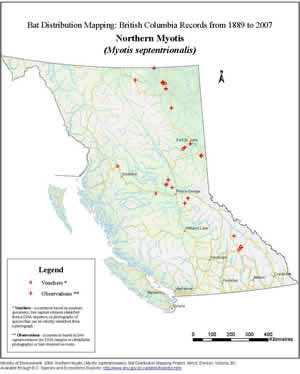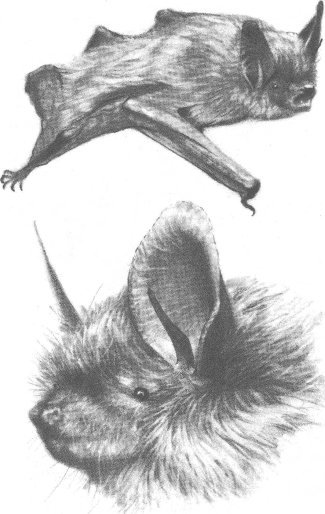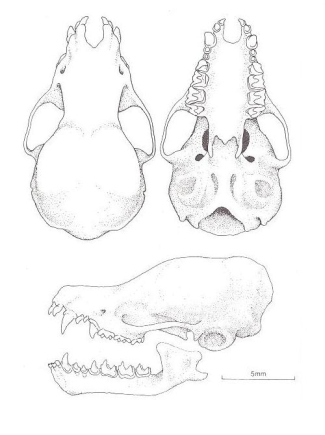Mating usually takes place at the hibernaculum in autumn; females produce a single young. The only available breeding datum for British Columbia, a female with a six-millimetre embryo found on 16 June, suggests that young are born in late June or early July.
|
This species emerges at dusk to hunt over small ponds and forest clearings under the tree canopy. In Mount Revelstoke National Park Northern Long-eared Myotis were observed regularly at dusk drinking from small pools in forest clearings. Much of this species' hunting activity takes place just above the understory one to three metres above the ground. Its diverse diet includes caddisflies, moths, beetles, flies and leafhoppers. Some prey may be gleaned from twigs and foliage.
|
No roosts have been found in the province. In eastern North America summer day roosts and nursery colonies have been found in buildings and under the bark of trees; all nursery colonies were small, comprising no more than 30 individuals. Caves may be exploited for temporary night roosts.
There are no winter records for the province. However, in other parts of North America, the Northern Long-eared Myotis hibernates in caves and abandoned mine tunnels. Swarming behaviour begins in late summer or early autumn and movements of up to 56 kilometres between the summer roost and the hibernaculum have been documented. This species appears to be a late hibernator; in eastern Canada it arrives at hibernacula two to eight weeks after the Little Brown Myotis enters hibernation. The Northern Long-eared Myotis hibernates alone or in small clusters, selecting tight crevices or drill holes where temperatures may be as cool as 1.6°C. Although this species and the Little Brown Myotis often share hibernacula, they are rarely found touching while hibernating.
|
|


